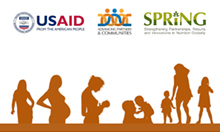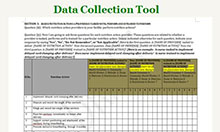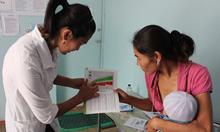
Nearly half of all deaths in children under five are attributable to undernutrition. Three million lives are lost each year to it (UNICEF 2016). Undernutrition not only increases the frequency and severity of common infections and the risk of dying from them, but it also has long-term consequences on growth and development and is associated with impaired cognitive ability, reduced school and work performance, and increased risk of noncommunicable diseases later in life. In response, in its recent Global Nutrition Coordination Plan 2016–2021, the US Government (USG) committed to “improving nutrition throughout the world in order to enhance health, productivity, and human potential” through a coordinated multi-agency response (USAID 2016). The Multi-Sectoral Nutrition Strategy 2014–2025 of the United States Agency for International Development (USAID) recognizes the need for increasing the equitable provision and utilization of high-quality nutrition-specific and nutrition-sensitive interventions.
To achieve this commitment, evidence-based, cost-effective interventions need to be scaled up. Many of those interventions will require the services of a range of providers, including community volunteers, health workers, teachers, agricultural extension workers, and other community actors. Services may include nutrition-specific actions, such as nutrition assessment, counseling, and care, as well as more nutrition-sensitive approaches, such as supporting livelihoods; promoting nutrition-sensitive agricultural practices; teaching families about homestead gardening and food preparation; and providing training on the use of safe water, sanitation, and hygiene.
High-quality service delivery depends on the actions and behaviors of service providers. A systematic and sustainable change process and three complementary components are required to bring about meaningful change in the behavior of service providers and, by extension, the nutrition services they provide:
- A strong foundation facilitates the provision of nutrition services. Often referred to as an “enabling environment,” this foundation consists of policies, protocols, guidelines, curricula, and systems—information, supervision and human resource—that integrate and address nutrition.
- Support for nutrition service providers at all levels and from multiple sectors is critical, including training, coaching, supervision, equipment, and supplies. Support must be provided in such a way that it is sustainable—ideally through existing government systems—as well as scalable.
- There must be a demand for quality services by men, women, and children who are educated and motivated to improve their nutritional status, use nutrition services, and engage with service providers to ensure that services meet their needs.
There are many approaches to building a strong foundation, supporting service providers, and creating demand for their services. Much has already been written about these approaches in terms of how they have been employed in the health sector, but less has been written about strengthening the quality of nutrition services and doing so within the context of other sectors. In this guide, we draw on the previous literature to propose a pathway for applying quality improvement (QI) approaches to the delivery of nutrition services. We strongly believe in the importance of integrating nutrition into existing systems rather than creating parallel and often unsustainable interventions as well as in addressing—or at least considering—the components of foundation, support, and demand. However, we also believe that there is more than one way to make this work. Countries, districts, and communities differ, and approaches must, therefore, adapt to meet their diverse needs.
This guide is written for government staff, USAID missions, and implementing partners interested in improving the quality of nutrition-related services delivered at various levels and by a range of sectors. Country examples, links to relevant resources, and lessons learned regarding systematic and sustainable change processes are provided throughout the brief, which concludes with a presentation of key recommendations.
To view the rest of this document, please download the full brief above.



